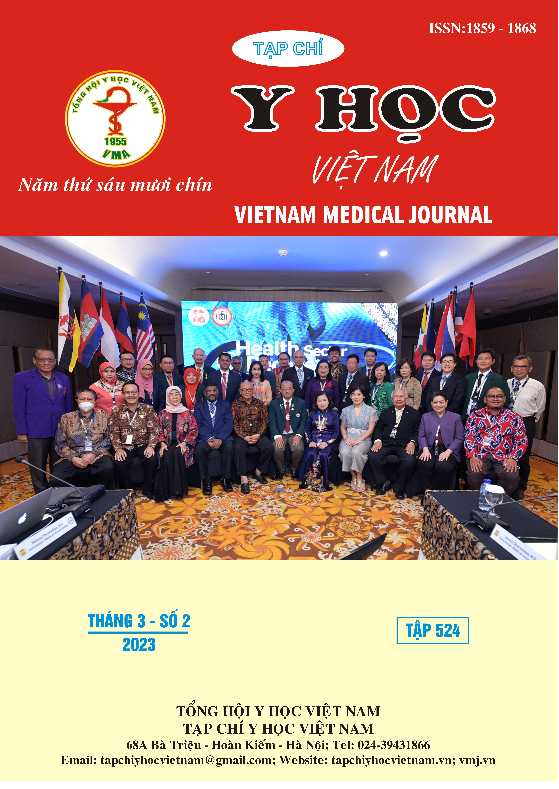RESEARCH ON SOME FACTORS AFFECTING PULMONARY FUNCTION IN PATIENTS AFTER COVID-19 EXAMINATION AT 103 MILITARY HOSPITAL
Main Article Content
Abstract
Objectives: To investigate some factors affecting pulmonary function in patients after Covid-19 infection who examinated at 103 Military Hospital. Subjects and methods: a total of 110 patients aged 20 to 48 years old with medical history diagnosed as positive for Covid-19 by real-time RT-PCR test or antigen rapid test were collected from February 2022 to May 2022 at 103 Military Hospital. Pearson correlation or Independent Samples T-Test was used to assess the relationships between the pulmonary function indicated by spirometry indices and age, height, weight, BMI, time after Covid-19 infection, peripheral oxygen saturation (SpO2) during Covid-19 infection. Results: Age was negatively and significantly correlated with FVC (liter), FEV1 (liter), FEV3 (liter), FEV6 (liter). In contrast, weight was positively and significantly correlated with FVC (liter), FEV1(liter), FEF 25-75% (liter/second), FEV3(liter), FEV6(liter). Similarly, height was positively and significantly correlated with FVC (liter), FEV1(liter), FEF 25-75% (liter), FEV3(liter), FEV6 (liter), FEF 200-1200(%). BMI was positively and significantly correlated with FVC (liter), FEV1 (liter) and FEV6 (liter). A significant decrease of FVC(liter) was observed in the group with the lowest peripheral blood oxygen saturation levels lower than 94% as compared with the group with the peripheral blood oxygen saturation levels greater than 94%. Conclusion: Age, height, weight, BMI, peripheral blood oxygen saturation when Covid-19 infection were related to pulmonary function in patients after Covid-19 infection.
Article Details
Keywords
pulmonary function, some affecting factor, after Covid-19 infection
References
2. Torres-Castro R, Vasconcello-Castillo L, Alsina-Restoy X, Solis-Navarro L, Burgos F, Puppo H, Vilaró J. Respiratory function in patients post-infection by COVID-19: a systematic review and meta-analysis. Pulmonology. 2021. 27(4):328-337.
3. Knudson RJ, Lebowitz MD, Holberg CJ, Burrows B. Changes in the normal maximal expiratory flow-volume curve with growth and aging. Am Rev Respir Dis.1983. 127(6):725-34.
4. Vaz Fragoso CA, McAvay G, Van Ness PH, Metter EJ, Ferrucci L, Yaggi HK et al. Aging-Related Considerations When Evaluating the Forced Expiratory Volume in 1 Second (FEV1) Over Time. J Gerontol A Biol Sci Med Sci. 2016. 71(7):929-34.
5. Talaminos Barroso A, Márquez Martín E, Roa Romero LM, Ortega Ruiz F. Factors Affecting Lung Function: A Review of the Literature. Arch Bronconeumol (Engl Ed). 2018. 54(6):327-332.


